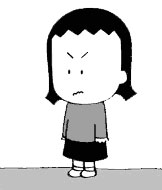 “The fires of suffering and strife rage around the world,” and continue to rage in the Rakhine state of Burma. Recent sectarian strife between Arakanese Buddhists and the Rohingya Muslim community have claimed the lives of at least 78 people, and displaced over 80,000 fleeing from the violence. With the situation degenerating into a vicious cycle of hate begetting hate, it has come to light that some Buddhist monastics are actively engaged in fanning the flames by calling on lay people to disassociate with the Rohingya and actively blocking humanitarian aid to the refugee camps.
“The fires of suffering and strife rage around the world,” and continue to rage in the Rakhine state of Burma. Recent sectarian strife between Arakanese Buddhists and the Rohingya Muslim community have claimed the lives of at least 78 people, and displaced over 80,000 fleeing from the violence. With the situation degenerating into a vicious cycle of hate begetting hate, it has come to light that some Buddhist monastics are actively engaged in fanning the flames by calling on lay people to disassociate with the Rohingya and actively blocking humanitarian aid to the refugee camps.
Shame on any monastics who would use their moral authority to suade others in enhancing suffering. While their Arakanese identity may compel them to act in ways that hurt others, they also wear the ochre robe and carry with it the freedoms and responsibilities of their monastic precepts. Their renunciation embodied by the first precept has now been made useless. By their own actions, these monastics demonstrate that they do not deserve to wear the ochre robe.
I realize that the situation is not so black and white. However, the Arakanese and Rohingya alike are sharing in pain. The face of suffering is the same among all people and the cycle of violence rings throughout history. In the late 1960’s, my parents, their families, and many of their Toisan community were driven away by the Burmese and fled into Maoist China. Though the conditions were not great, at least they had a state which would accept them as Han Chinese and would provide a home.
The Rohingya have no state advocates and have shuttled back and forth between Bangladesh and Burma for many decades. Burma’s Presidential Office has stated that “It is impossible for Burma to accept people who are not ethnic to the country and who have entered illegally.” Their situation grows more desperate as the violence continues, as more people are displaced, and as more languish in camps without the infrastructure or supplies to support them. Organizations that have stood up for the Rohingya include the UN and the Organization for Islamic Cooperation. Unfortunately, as the violence continues, the Rohingya’s list of advocates now include the Pakistani Taliban, who have said, “We will avenge your blood.”
Aung San Suu Kyi, in your Nobel Peace Prize acceptance speech, you acknowledged the ongoing strife in your native Burma. We all celebrate your release and your continued work for democracy in your country. This means that you are again a politician for your constituents: speaking on their behalf, and sharing their concerns. Your freedom to speak as you choose is also delicately tied to the whims of a state still emerging and fragile in its transition towards democracy. Nevertheless, the moral authority you possess reaches across national boundaries as we lend you our ears. Please speak out. Your voice as a mediator are needed in this conflict. Lend your compassion with the humanitarian aid organizations and help to relieve the suffering in Burma.

 Some Buddhist writers have an unquenchable fascination with Western Buddhism. Perhaps it’s due to a flaming sense of entitlement, zealous evangelism or cultural elitism. Regardless, I unfortunately seem to have an undying fascination with these people.
Some Buddhist writers have an unquenchable fascination with Western Buddhism. Perhaps it’s due to a flaming sense of entitlement, zealous evangelism or cultural elitism. Regardless, I unfortunately seem to have an undying fascination with these people. My cold still has not gone away, so after zipping through Trader Joe’s (also across the street), I made a quick swing by Borders, where I noticed that the new issue of
My cold still has not gone away, so after zipping through Trader Joe’s (also across the street), I made a quick swing by Borders, where I noticed that the new issue of 
 Buddhism in America is headed for exciting times, agreed the four esteemed participants — Sumi Loundon Kim,
Buddhism in America is headed for exciting times, agreed the four esteemed participants — Sumi Loundon Kim, 